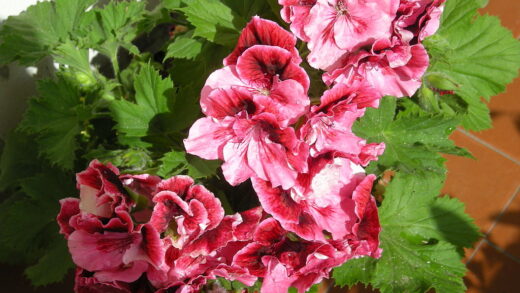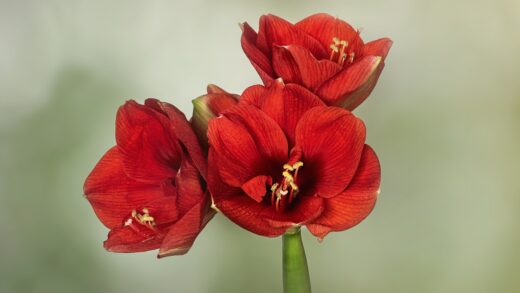Wintering of the tulip

The period of winter dormancy is a critical and often misunderstood phase in the life cycle of a tulip. What happens to the bulb during the cold months is just as important as the care it receives during its spring growth and bloom. Proper wintering ensures that the bulb not only survives but also receives the necessary chill period required to trigger the biochemical processes for flowering. Whether you leave your bulbs in the ground or choose to lift and store them, understanding how to protect them through the winter is fundamental to achieving a vibrant and reliable display year after year. This guide will explore the essential aspects of wintering tulips, providing the knowledge you need to see them safely through to the next spring.
For tulips to bloom, they must undergo a period of cold temperatures, a process known as vernalization. This cold treatment, typically lasting for 12 to 16 weeks at temperatures between 35°F and 45°F (2°C and 7°C), simulates the natural winter conditions of their native habitat. This chilling period is essential for the bulb to complete its internal development, which includes the formation of the flower bud and the elongation of the stem. Without this prolonged cold exposure, the bulbs will often fail to flower, a condition known as “blasting,” or they may produce only leaves with short, aborted flower stems.
In many climates (typically USDA Hardiness Zones 4-7), the winter is cold enough to provide this necessary chilling period naturally, and tulip bulbs can be left in the ground year-round. In these regions, the primary concern for winter care is to provide a protective layer of mulch after the ground has frozen. Applying a 2 to 4-inch (5 to 10 cm) layer of mulch, such as shredded leaves, straw, or pine bark, helps to insulate the soil. The purpose of this mulch is not to keep the ground warm, but rather to keep it consistently frozen and prevent the damaging effects of repeated freezing and thawing cycles, which can heave the bulbs out of the soil.
The timing of mulch application is crucial. You should wait until after the first hard freeze has occurred and the ground is cold. If you apply the mulch too early, while the soil is still warm, it can trap heat and moisture, potentially leading to bulb rot. It can also provide a cozy winter home for rodents like voles and mice, which may then feast on your bulbs. Once spring approaches and the threat of severe cold has passed, you should gently remove the mulch layer to allow the soil to warm up and to make way for the emerging tulip shoots.
In milder climates (USDA Zones 8 and above), the winters often do not get cold enough for a long enough period to satisfy the chilling requirement of most tulip varieties. In these areas, gardeners must artificially chill the bulbs before planting. This involves purchasing the bulbs in the autumn and storing them in a refrigerator for the required 12 to 16 weeks. It is very important to keep the bulbs away from ripening fruit, such as apples, which release ethylene gas that can inhibit flowering. After the chilling period is complete, the bulbs can be planted in the garden in late winter for a spring bloom. In these warm climates, tulips are almost always treated as annuals.
More articles on this topic
Lifting and storing bulbs
In certain situations, it is beneficial or even necessary to lift tulip bulbs out of the ground for the winter. This is a common practice for gardeners who wish to protect specific, valuable cultivars, for those who live in regions with very wet summers where the bulbs might rot, or for those who simply want to use the garden bed for other plants during the summer. If you decide to lift your bulbs, the process should begin after the foliage has completely yellowed and died back, which is typically about six to eight weeks after flowering. This ensures that the bulb has had adequate time to store all the energy it needs for the following year.
To lift the bulbs, use a garden fork or spade to carefully dig around the clump, being mindful not to slice into the bulbs themselves. Gently loosen the soil and lift the entire clump. Once out of the ground, shake off the excess soil and lay the bulbs out to dry for a few days to a week in a shady, dry, and well-ventilated location. Do not wash the bulbs, as this can introduce moisture and encourage rot. Once the bulbs are dry, you can clean them more thoroughly by brushing off the remaining soil and removing the old, dried-up stems and any remnants of the old mother bulb from the previous year.
Proper storage is key to keeping the bulbs healthy until it is time to replant them in the autumn. The ideal storage conditions are cool, dry, dark, and with good air circulation. A basement, garage, or shed often works well. Place the cleaned bulbs in mesh bags, old nylon stockings, or paper bags with ventilation holes. Avoid using plastic bags, as they trap moisture and will cause the bulbs to rot. Spreading the bulbs out in a single layer on a tray or screen is also an excellent option. Label the bags or trays clearly with the variety and color so you know what you have when it comes time to replant.
Throughout the storage period, it is a good idea to check on your bulbs every few weeks. This allows you to catch any potential problems early. Discard any bulbs that show signs of mould or have become soft and rotten. This prevents the problem from spreading to the other healthy bulbs. By following these careful lifting and storing procedures, you can preserve your favorite tulip varieties and ensure you have a healthy stock of bulbs ready for planting in the autumn.
More articles on this topic
Winter care for tulips in containers
Tulips planted in containers require special attention for wintering because they are much more exposed to the cold than bulbs planted in the ground. The soil in a pot can freeze solid much more quickly and deeply, and the container offers little insulation to protect the bulbs from fluctuating temperatures and harsh, drying winds. In colder climates (generally Zone 6 and colder), leaving a tulip-planted container fully exposed to the elements all winter is likely to kill the bulbs. Therefore, you must take steps to provide them with adequate protection.
One of the most effective methods for wintering containerized tulips is to move the pot into an unheated but sheltered location, such as a garage, shed, or cold cellar. This protects the container from the harshest temperature swings and from becoming waterlogged by winter rain and snow, while still allowing the bulbs to receive the necessary cold period for vernalization. The soil in the pot should be kept very slightly moist but never wet; you may need to water it lightly once a month to prevent the bulbs from completely drying out.
If you do not have a garage or shed, you can still protect the container outdoors. One option is to sink the entire pot into an empty garden bed and cover it with a thick layer of mulch. The surrounding soil provides excellent insulation. Alternatively, you can group several containers together against a sheltered wall of your house and then heap insulating materials like shredded leaves, straw, or even bubble wrap around and over the pots. The goal is to mimic the insulating effect of being planted in the ground.
Another method, particularly for those in very cold climates, is to create a “pot-in-pot” system. This involves planting the tulips in a simple plastic pot that can then be placed inside a larger, more decorative container. For the winter, you can lift the inner pot out and bury it in the garden for insulation. In the spring, you simply retrieve the pot, wipe it clean, and place it back into its decorative container for display. This makes moving the pots much easier and protects your more valuable containers from potential winter damage.
Common wintering mistakes to avoid
One of the most common mistakes gardeners make is applying winter mulch too early in the season. As mentioned previously, mulching while the ground is still warm can trap heat, which can lead to the bulbs rotting or sprouting prematurely. It also creates an inviting habitat for rodents seeking shelter for the winter. Always wait until the ground has had a chance to freeze before you apply your insulating layer of mulch. This ensures the mulch serves its intended purpose of keeping the ground consistently cold.
Another frequent error is neglecting the chilling requirement, particularly for gardeners in warmer climates. Attempting to plant tulip bulbs that have not received an adequate cold period will almost always result in disappointment. If your winter temperatures do not reliably stay below 45°F (7°C) for at least 12 weeks, you must pre-chill your bulbs in the refrigerator. Do not skip this step, as it is biologically essential for the vast majority of tulip varieties to produce a flower.
Forgetting about container-grown tulips during the winter is also a path to failure. It is easy to place a pot in the garage and then completely forget about it until spring. However, the soil can completely dry out over a long winter, which will desiccate and kill the bulbs. Set a reminder to check on your stored pots at least once a month and provide a small amount of water if the soil is bone dry. The goal is not to keep the soil wet, but just to prevent it from becoming dust-dry.
Finally, a crucial mistake is improper storage of lifted bulbs. Storing them in a location that is too warm can prevent them from going fully dormant or can cause them to sprout too early. Storing them in a damp location or in a sealed plastic container will inevitably lead to mould and rot. Ensuring your storage spot is cool, dark, dry, and well-ventilated is absolutely critical to the bulbs’ survival. Taking the time to provide the correct wintering care will be rewarded tenfold when your healthy, well-rested tulips burst into bloom in the spring.



















